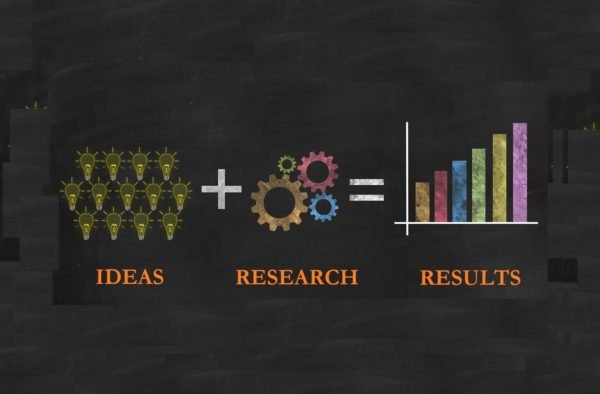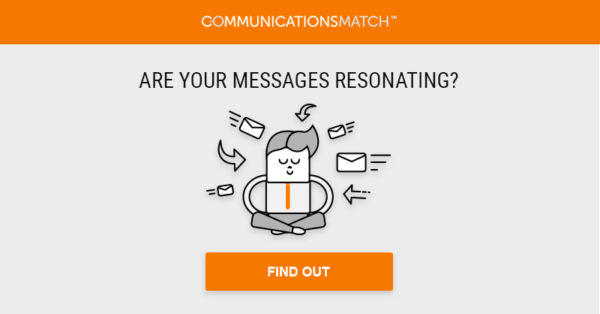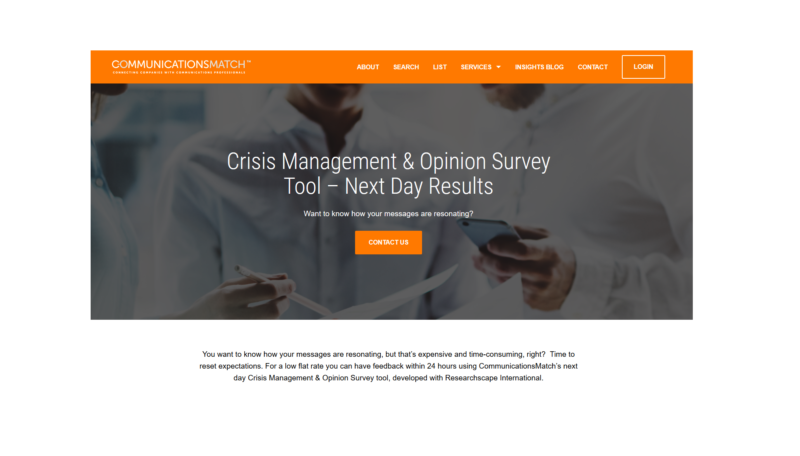Research-Driven PR: Research Tools to Identify Big Ideas (Part 1)
Simon Erskine Locke, Founder & CEO, CommunicationsMatch™In this two-part article we explore two sides of incorporating research into the practice of communications and how technology is making it more accessible. Here, we focus on using research to identify big ideas for PR campaigns. In the coming weeks, we’ll address research as a tool to generate media coverage. It’s fair to say that when research comes to mind, two thoughts often pop up: cost and SurveyMonkey. We hear both in conversations all the time. When discussions turn to nationally representative surveys of key audiences, eyes dim as dollar signs flicker on their inner screen. “That’s going to be expensive.” 
PR Research Costs
The perceived barrier of the cost of research often prevents companies and agencies from seeing beyond it to the value and ROI conversation we really need to have.Using a free questionnaire tool may provide useful data – but business and communications leaders need to ask what will be the response rate? Will the questions get at what’s important, or simply reflect the biases a company already has about their business? Business leaders also need to ask how much they’ll be investing based on this research, because that’s the investment at risk.New technology-driven approaches to surveying audiences, pioneered in the communications industry by CommunicationsMatch™ partner, Researchscape, have dramatically reduced the cost of research and the time it takes to get results - professional research is no longer out-of-reach.
Research and the History of PR
Access to these tools provide an opportunity for communicators and marketers to go back to past PR best practices to drive better future results.As Shelley Spector, Founder of the Museum of Public Relations, notes, “Practitioners today can learn much by studying the practices developed a century ago by such professionals as Ed Bernays. Inspired by his uncle, Sigmund Freud, Bernays viewed the public through a psychological lens, and created his campaigns based on the attitudes of his target audiences. Thus, he defined public relations as an "applied social science" used to influence public opinion and build trust and good will between the company and its many markets.”
Watch this video with Shelley Spector on the History of PR and Big Ideas.
Research-Based PR Insights
Although there is a lot that is being measured today, including website traffic, social media engagement and media coverage, it’s important for practitioners to ask: Are we investing enough in research to develop campaigns? Are the insights upon which a program is built representative of the audiences being targeted?
Agile Approach to Uncovering What Works
Agile marketing - where we develop ideas, implement them and iterate based on what does and doesn’t work - is now a mantra for digital marketing and startups. Yes, you can iterate your way to success, but it’s better to have a compass (or GPS) guiding your approach: Research-based insights into what will drive audience behavior. Focus groups, client interviews, user data analysis, and surveying audiences should all be on the menu.
Communications Research Experts
 Professionally developed questionnaires that draw upon national panels or focus on specific audiences provide a path to developing statistically valid data on which to base decisions – PR or otherwise – that may cost tens, if not hundreds, of thousands of dollars. Combining surveys with other metrics that help put audience behavior into context is the key to building a firm foundation for brand building decisions.
Professionally developed questionnaires that draw upon national panels or focus on specific audiences provide a path to developing statistically valid data on which to base decisions – PR or otherwise – that may cost tens, if not hundreds, of thousands of dollars. Combining surveys with other metrics that help put audience behavior into context is the key to building a firm foundation for brand building decisions.
Research in a PR Crisis
 It’s worth noting that it’s equally important to recognize that the same principles apply to managing and addressing issues or crises. It’s the reason we worked with Researchscape to develop a next-day “Crisis & Opinion Survey” research tool that helps companies both determine how messages are resonating and assess the impact on a company.
It’s worth noting that it’s equally important to recognize that the same principles apply to managing and addressing issues or crises. It’s the reason we worked with Researchscape to develop a next-day “Crisis & Opinion Survey” research tool that helps companies both determine how messages are resonating and assess the impact on a company.
Watch this video with Tony Cheevers on Crisis & Opinion Surveys.
Conducting thorough, professional research to identify and validate ideas that drive public relations and communications programs is to reconnect with PR’s roots. Good research is the key to understanding audiences and driving desired behaviors. By tapping into motivations, PR ideas become big ideas – not because they cost more but because they have a greater impact.In our follow up article on research-driven PR, we’ll shift the focus to leveraging research in PR and communications campaigns. For this, we’ll be drawing upon Researchscape’s annual review of research that gets covered in the media.
Simon Erskine Locke, Founder & CEO, CommunicationsMatch™
Locke developed and launched CommunicationsMatch, an agency search and engagement platform with 5,000 listed firms and professionals in 12 countries, to help companies find and engage agencies, consultants and freelancers that match needs. A founder of communications agencies and startups, he previously headed communications functions at Prudential Financial, Morgan Stanley and Deutsche Bank.

